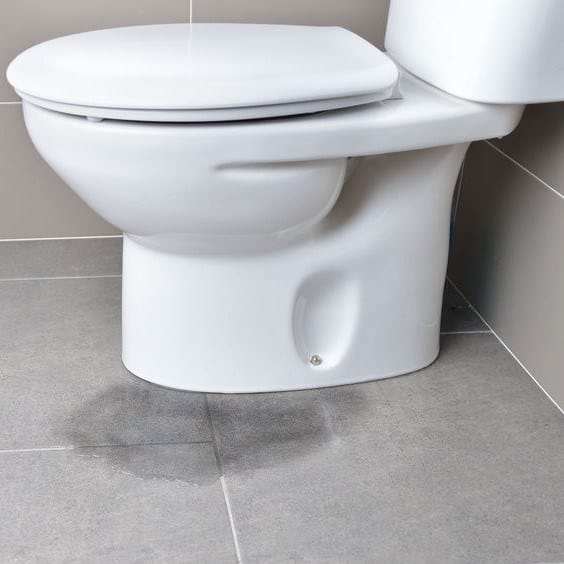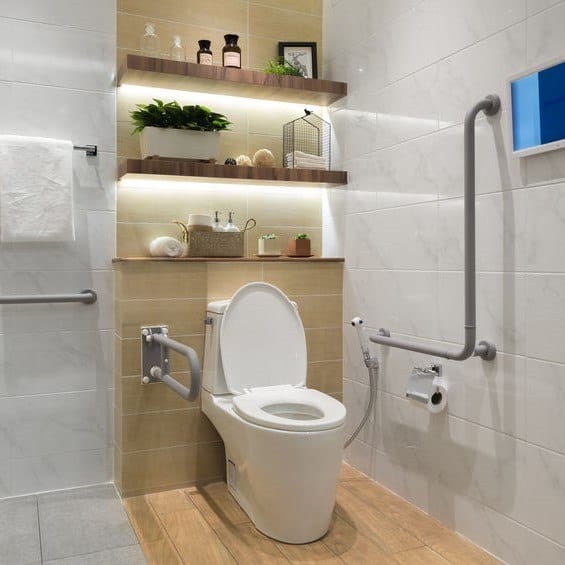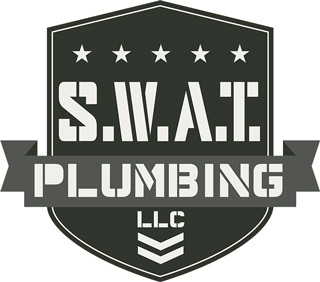How do I fix my toilet?
When your toilet is malfunctioning, does that mean you have to get a new one? Or is toilet repair possible? For may of us that have never ventured any further than jiggling the handle, toilet repair and installation is a place no one should go without training and experience in plumbing.
Surprisingly for those of us with that mindset, some toilet repair tasks isn’t all that complicated. Today, we’re going to provide some basic questions and answers, and maybe next time you can answer your own question of, “What’s wrong with my toilet?”.
The basic residential toilet is surprisingly simple. Most toilet repairs can be done for less than $25 and within in an hour or less. Your first need to diagnose the problem and that takes knowing the parts of a toilet. So, before you attempt toilet repair, take moment to review this:
Schedule ServiceAledo - 817-438-6142
Fort Worth - 817-438-6955

There are two main parts to a toilet:
- The Bowl: This is the part that is connected to the floor which has a seat where you sit. It is solid porcelain and has water in it, but no moving parts.
- The Tank: This part is the back of the toilet and has the handle you push down to flush. It has water in it and all of the moving parts that you’ll ever need to know for toilet repairing.
The function of the toilet tank is to hold a certain level of water until the handle is pushed down to flush the toilet. Then, that water rushes down into the toilet bowl through an opening and forces the waste out of the toilet bowl, into a drain that leads to the sewer line. Two components inside the tank make that happen:
- The Flush Valve
- The Fill Valve – this mechanism fills allows water to fill the tank for the next flush.
There are four different fill valve designs, all automatically open the water supply valve when flushed, allowing water to fill and automatically close when the water has reached a certain level in the tank.
What are the parts called inside a toilet?
Yes, there are other parts to a toilet besides the bowl, tanks, flush valve and fill valve. Those parts are:
- The Handle and Flush Rod: These are work when you initiate the flushing process by pushing the handle down. There is a horizontal rod attached to the handle with a chain that pulls the rubber flapper up. Occasionally the handle becomes loose, requiring a quick toilet repair of tightening the nut on the inside of the tank.
- The Lift Chain: The lift chain descends vertically inside the tank and as we described above, pulls the rubber flapper up so the toilet can flush. It also allows the flapper to return once the flush has complete. This part will sometimes break or get tangled up inside. The toilet repair chain is easy by using pliers and patience to either untangle it or replace it with a new chain.
- The Flapper: This is the rubber flapper we’ve mentioned, and it sits on the flush valve until the chain pulls it up for the flushing operation. This rubber flapper will get mis-centered or wear out and need to be replaced. Easy toilet repair is replacing the flapper, some older toilet this will be a ball-like part instead, but the toilet repair is basically the same theory. When your toilet “is constantly running” this is usually the culprit.
- The Overflow Tube: This toilet part is connected to the flush valve and is a safety feature that keeps water from overflowing from the tank when the flush valve doesn’t shut off. Any excess water spills over into the top of the overflow tube then in the toilet bowl. This too can be a reason the toilet is “running” when the overflow tube malfunctions, allowing too much water into the tank.
- The Shutoff Valve: On the exterior backside of the toilet is the water supply pipe. This is where the cold water comes in to fill the toilet. A shutoff valve should be located there that allows you to turn the water off to the toilet for toilet repair emergencies. If there isn’t one, it is well worth hiring a plumber to install one.
- The Water Supply Valve: Sometimes referred to as the ballcock, this vertical positioned assembly is located inside the tank and is the center piece of the toilet system. It opens up for water to enter and refill the tank after each flush then closes off the water once the tank has the proper level of water. This is a common toilet repair and with just a few instructions, is easy to replace.
- The Float Ball: This part is what senses the tank’s water level to tell the water supply valve when to open and close. It is typically a floating ball that is attached to a horizontal pivoting arm. Often when a toilet is running, an easy toilet repair is to adjust this device.
Can a toilet fill valve be repaired?
Yes, either you can call a plumber, of you can attempt this toilet repair yourself, which is the less expensive choice and relatively easy. The float is that simple device inside the tan that shuts the fill valve closed after the water has met the pre-determined level inside the tan after a flush. Attached to it is a float arm that exerts enough pressure on the valve gradually and as the fill valve closes, sediment from the water gets inside the opening, causing it to prematurely shut off. This doesn’t allow enough water to fill the tank for the next flush. The following steps will get you through this toilet repair:
- One: Turn off the water off with the shut-off valve located under the tank and then flush the toilet. Keep holding the handle down so you get as much water drained from the tank.
- Two: Remove the fill valve cap that has a tube attached to the float. It will either have screws attaching it or it lifts off as it turned counterclockwise.
- Three: Turn on the shut-off valve located under the toilet on so that a small quantity of water flows from the fill valve. Place the tank lid on or use your hand to cover this so water doesn’t spray all over you and the floor.
- Four: For ten seconds, let the water flow from the valve and then turn it off at the shut-off valve and put the cap back on. Now turn the water back on and let the tank fill.
How do you fix a weak flushing toilet?
 After some tie, a toilets will often develop a weak flush. A common issue that causes this is a build-up of calcium, lime, and other minerals in the water, along the rim of the toilet bowl. This build-up restricts the water flow into the toilet bowl, causing a weak flush. An easy toilet repair with these steps:
After some tie, a toilets will often develop a weak flush. A common issue that causes this is a build-up of calcium, lime, and other minerals in the water, along the rim of the toilet bowl. This build-up restricts the water flow into the toilet bowl, causing a weak flush. An easy toilet repair with these steps:
- Clean the rim with a toilet bowl cleaner with the water turned off and the water drained from the tank. Pour the cleaner into the opening of the flush valve and allow the toilet to sit overnight without use if possible. Then using a stretched out wire hanger, push into the jet holes, scraping the build-up away.
- Check the tank water level and if it is over one inch under the overflow pip, you need to adjust the incoming water level .This toilet repair is done by adjusting the water height of the fill valve. It may be the flapper needs adjusting not to close too soon, with a slack of half-inch in the chain. This isn’t a precise setting but rather a trial and error. It may take a few tries to get it right.
Why did my toilet explode?
Residential toilets are virtually impossible to explode. There have been videos of teens lighting spray air freshener in the toilet bowl and causing it to explode or pouring a flammable liquid like gasoline in the bowl then lighting it. For the most part though, unless there is pressurized water at 60 psi in the tank and a leak in the water pipes that allowed air in, flushing a toilet in the same water system could cause one to explode.
When a wax ring has to be replaced, this is a job or an experienced DIY homeowner or a plumber. It requires a toilet repair bolt to floor replacement and the toilet repair flange replaced as well. It takes either 2 people or one strong person to lift the toilet off the floor, after the water has been turned off and the water line disconnected. If this is your first attempt at a toilet repair, we recommend having help. Call 817-244-4370 today for your toilet repair needs in Fort Worth, TX.









